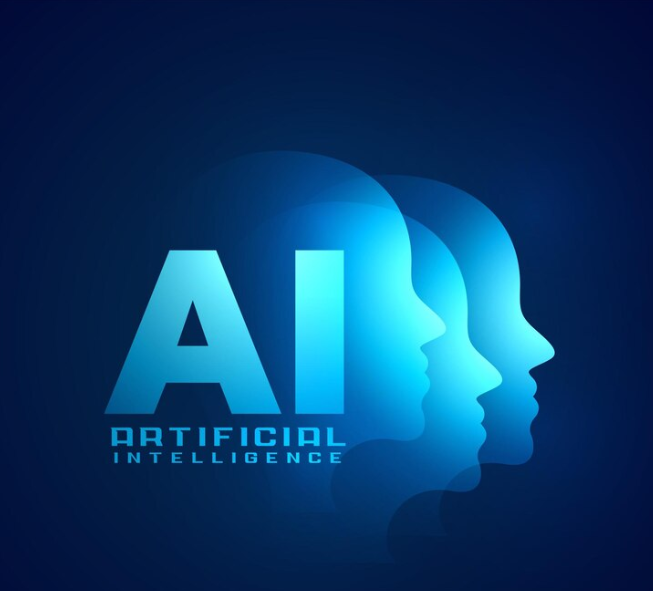One innovation that is revolutionizing the field of digital creation is the creation of AI that can create 3D models from text. Previously a task reserved for experienced designers and specialized software, anyone with an idea can now create 3D models. With just a few descriptive sentences, creators from a wide range of industries, including gaming, architecture, healthcare, and education, can now realize their ideas. Artificial intelligence is capable of creating a fully realized, three-dimensional object from a simple prompt in a matter of seconds. In an era where technology is king, this invention is fundamentally changing the way we think about creativity, teamwork, and design.
The emergence of platforms such as Meshy AI and 3D AI Studio has improved the speed and usability of 3D modeling. These AI-powered tools eliminate the need for conventional 3D modeling knowledge by enabling users to create models from text descriptions or images. These solutions’ ease of use and speed are very advantageous, providing substantial cost savings and drastically cutting down on the amount of time needed to create high-quality 3D assets. The ability to create 3D models from text alone is rapidly becoming essential, whether you’re an architect visualizing a building or a game developer creating virtual environments.
3D Model Generating AI Tools
| Platform | Features | Best For | Website Link |
|---|---|---|---|
| Meshy AI | Text and image to 3D model transformation | Game developers, digital artists | Meshy.ai |
| 3D AI Studio | AI toolkit for text-to-3D model generation | Designers, architects, educators | 3DAIStudio.com |
| Sloyd AI | Quick 3D design generation from text | 3D printing enthusiasts, designers | Sloyd.ai |
| Luma AI | 3D model creation from text and images | Cinematographers, game developers | Luma.ai |
| Tripo AI | Text/image-based 3D model generation | Game designers, VR creators | Tripo3D.ai |
| Alpha3D | Convert images and text to 3D models | 3D modeling beginners, artists | Alpha3D.io |

These platforms are highly efficient, offering tools that not only generate 3D models from text but also Permit quick changes and adaptations. For instance, by adding a few lines of descriptive text, game developers can create whole characters, objects, or landscapes. This accessibility is revolutionizing game production, making it noticeably quicker and more adaptable than in the past. In a similar vein, architects can now virtually instantly visualize their designs, giving clients access to real-time, editable 3D models that are no longer constrained by conventional design techniques.
These platforms can decipher intricate text prompts and transform them into digital models with precise proportions, textures, and aesthetics by utilizing potent AI algorithms. By drastically cutting down on the time required to go from idea to execution, this method frees up creators to concentrate on honing their concepts rather than the nuances of 3D modeling. Furthermore, the AI tools frequently have built-in capabilities that let users alter their models in real time by including dynamic components like lighting and textures.
The ability to create 3D models from text has created new opportunities for immersion and interaction in sectors like virtual reality and gaming. With the ability to describe entire levels, characters, and interactive elements, game developers can now greatly increase their creativity and cut down on production time. For prototyping and experimentation, this technology has proven to be incredibly helpful, enabling developers to test new ideas and iterate quickly in a fraction of the time that would be required in the past.
AI-generated 3D models are being used in the medical field to produce accurate representations of bones, organs, and other anatomical features. By using these models for preoperative planning, surgeons can see and model procedures with remarkable precision before ever entering the operating room. In complex surgeries, where a thorough understanding of the patient’s anatomy is essential to success, this technology is especially helpful. Artificial intelligence (AI) tools are improving the safety and efficiency of surgeries by allowing physicians to see organs in three dimensions.
In a similar vein, the education sector is adopting this technology to enhance the immersiveness and interactivity of learning. Students can now engage with intricate scientific ideas—like molecular structures, geological formations, and historical sites—in previously unthinkable ways thanks to AI-generated 3D models. This method offers a practical experience that improves comprehension and retention while also making learning more interesting and incredibly clear.
The broader effects on society and industries
It is impossible to overestimate the influence of AI-generated 3D models on society. These tools will surely alter how industries view design, collaboration, and production as they become more widely available. Specifically, the technology could democratize the production of 3D assets, enabling independent creators and smaller enterprises that might lack the funds to hire specialized designers or purchase pricey software. This is a very flexible solution that allows both individuals and groups to produce high-quality 3D models without the typically challenging learning curve.
Furthermore, there are major environmental advantages to using AI in design. Businesses can cut down on the waste and energy used in physical prototyping by enabling designers to create and test virtual prototypes more rapidly. As industries work to become more environmentally friendly, this can result in more sustainable design practices, which is particularly crucial. In addition to increasing productivity, the move to AI-powered digital creation is in line with the global push for sustainability in various industries.
AI-driven 3D modeling is probably going to keep developing over the next few years, becoming even more user-friendly and able to manage tasks that get more complicated. Platforms will likely incorporate increasingly sophisticated features like AI-assisted animation, real-time collaborative design, and even fully interactive 3D environments. AI will play a bigger role in the design process as it develops further, freeing up designers to concentrate on creativity while the technology manages the intricate details of 3D modeling.
In the future, even more opportunities could be unlocked by the combination of AI with other cutting-edge technologies like virtual reality (VR) and augmented reality (AR). What if a designer could not only turn text into a 3D model but also enter the model, interact with it in real time, and make changes as needed? An entirely new kind of immersive design, where the lines separating the virtual and real worlds become increasingly hazy, will be made possible by this degree of integration.
